If you’re planning a trip to Spain, you’ve probably already seen the iconic images, famous beaches, big cities, and must-see landmarks featured in every guidebook.
It’s what most people visit… but there’s another side of Spain that often goes unnoticed.
If you’re looking to go beyond the typical tourist route, uncover hidden gems, and experience the country in a more genuine way, this guide is for you.
Discover the places you won’t always find in the brochures.

10 Lesser-Known Places to Visit in Spain (Without the Crowds)
If your traveler’s spirit is craving more than the obvious, here’s the lesser-known and most surprising side of Spain.
1. Huesca
Often overshadowed by its nearby mountains, the city of Huesca itself is full of hidden corners with undeniable charm, far from the usual tourist trail.
One of its best-kept secrets is the “Chinese Wall of Finestras.” Yes, you read that right! While it’s not the Great Wall of China, this natural rock formation, with its jagged ridges and dramatic vertical walls, is a stunning sight for geology and nature lovers seeking something off the beaten path.
Another must-see is the Hermitage Route in Tella.
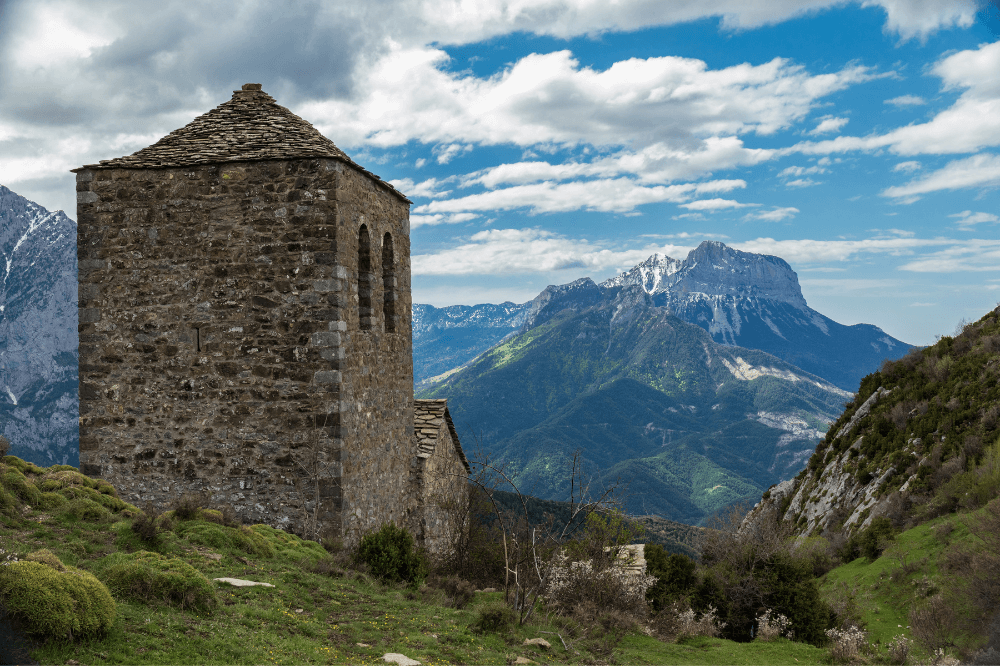
A tiny village tucked inside Ordesa and Monte Perdido National Park. Its Romanesque chapels, some built right into the rock, tell stories from centuries past.
It’s a gentle but magical hike where history and landscape come together in breathtaking ways.
Adventurers should also check out the nearby Cave of the Bear for a unique underground experience.
2. Plasencia
While it may not have the same name recognition as other Spanish cities, we can assure you that its rich history and stunning surroundings make every minute of your visit worthwhile.
One of Plasencia’s main highlights is its impressive cathedral complex.
Here, history comes in double: you’ll find both an Old Cathedral and a New Cathedral standing side by side, showcasing architectural styles that range from Romanesque to Gothic and Plateresque.
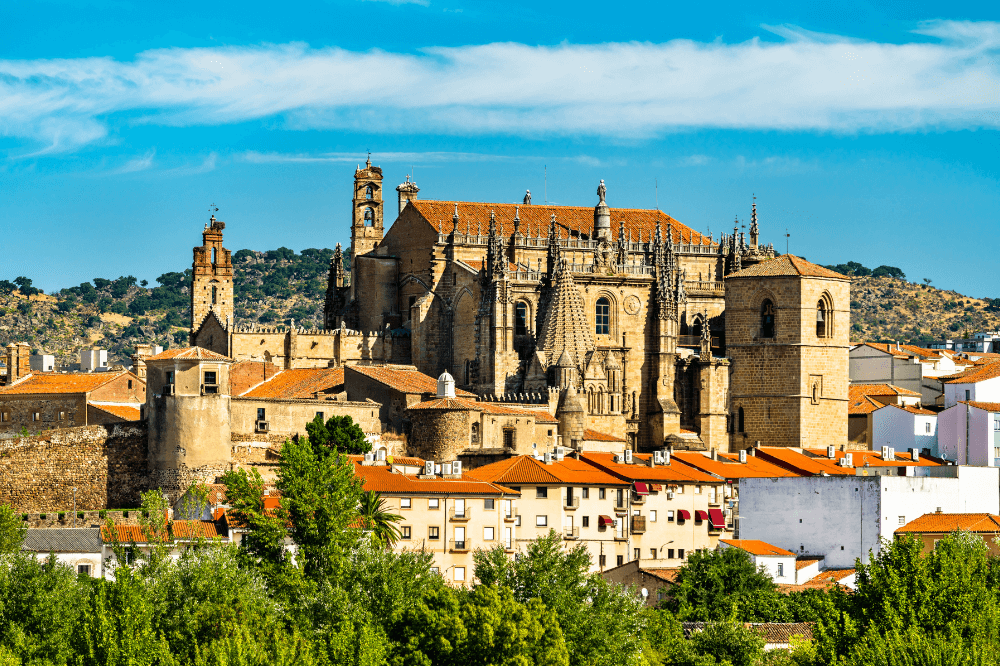
Walking through their halls is like stepping back in time, and seeing two such majestic buildings coexisting so closely is something you won’t easily forget.
The historic center, with its charming plazas and noble townhouses, invites you to slow down and take it all in.
But the experience in Plasencia doesn’t end within its city walls.
Just a short drive away is Monfragüe National Park, a true paradise for birdwatchers and nature lovers.
And if you’re drawn to picturesque villages, don’t miss the nearby Jerte Valley, especially in spring when cherry blossoms blanket the landscape in white.
It’s one of those sights you need to see at least once in your life.
3. Antequera
This city is a great choice for travelers looking to step off the beaten path of the Costa del Sol and dive into the true heart of Andalusia.
One of its most remarkable treasures is the Dolmens of Antequera, a UNESCO World Heritage Site. These megalithic monuments date back thousands of years, like the Dolmen of Menga, Viera, and the Tholos of El Romeral and offer a fascinating glimpse into prehistoric life.
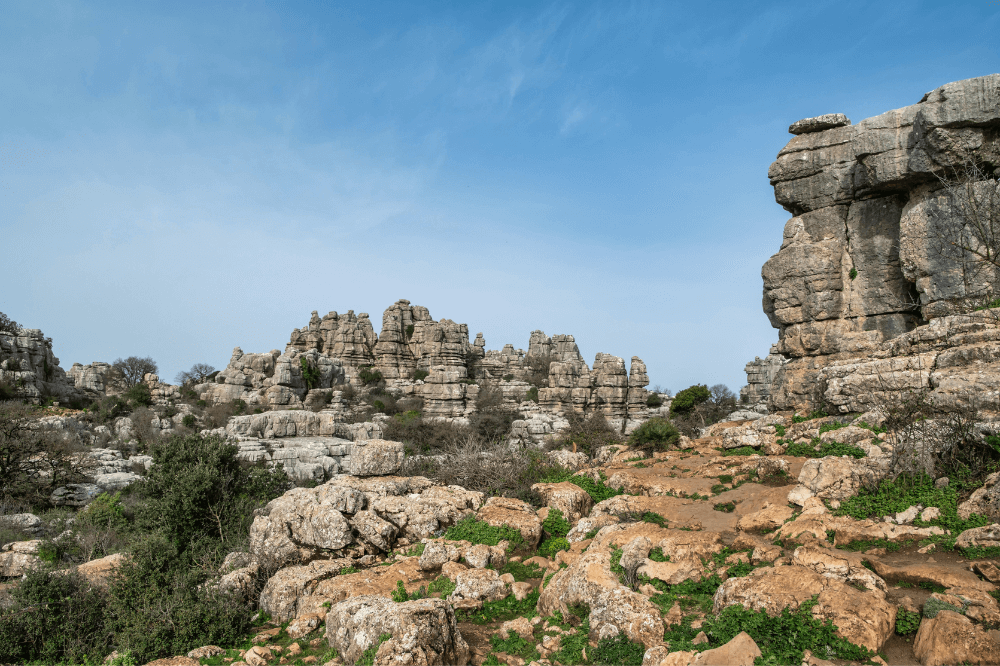
But Antequera’s richness goes far beyond that.
Don’t miss the chance to climb up to its Alcazaba, an impressive Moorish fortress that towers over the city and rewards you with sweeping panoramic views.
From there, you’ll spot the iconic Peña de los Enamorados, a rock formation tied to a romantic legend.
Just outside the city lies the Torcal de Antequera Natural Reserve, home to one of the most unique karst landscapes in Europe.
Its surreal rock formations, shaped by erosion over millions of years, create a lunar-like scene, perfect for hiking and photography.
4. Alcalá la Real
The crown jewel of Alcalá la Real is undoubtedly the Fortaleza de la Mota.
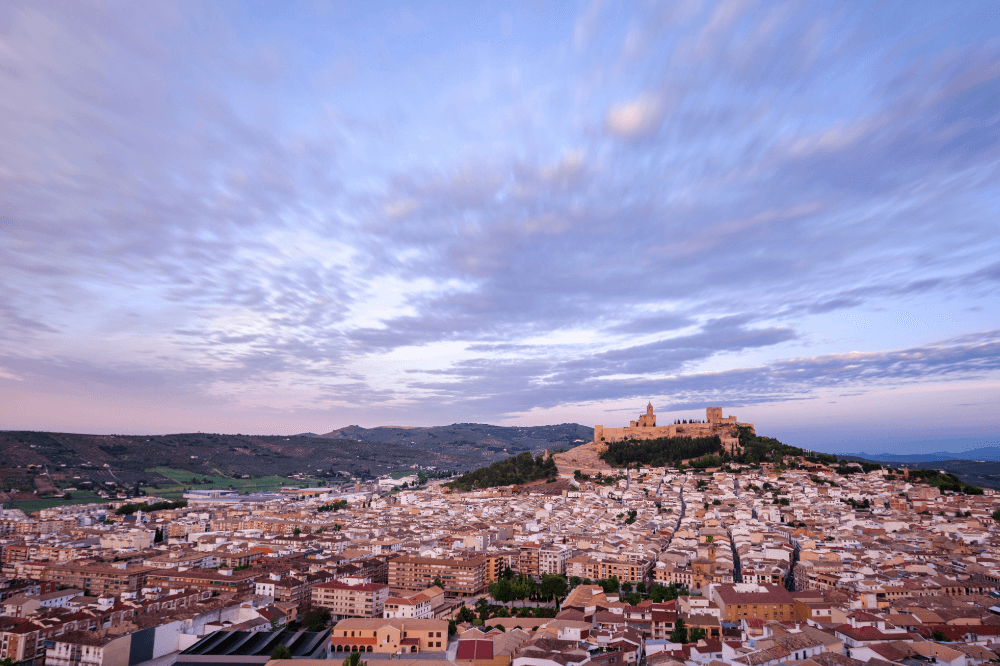
Perched on a hilltop, this fortified city played a crucial role on the frontier between Christian and Muslim kingdoms for centuries.
As you walk through its gates, towers, and winding medieval streets, it’s easy to picture what life was like during those times and why this site was so strategically important.
Beyond the fortress, the town itself is also worth exploring at a slower pace.
Its whitewashed houses and charming corners preserve the traditional Andalusian feel.
You’ll come across historic churches like Santo Domingo de Silos and get a sense of daily life in its lively squares.
So, if you’re looking for a getaway full of history, the chance to explore a magnificent fortress, and the peace of a truly authentic Andalusian village, Alcalá la Real is waiting for you.
5. Toro
This is the perfect destination for travelers looking to immerse themselves in Castilian history and culture away from the crowds with the chance to explore truly remarkable architectural heritage.
One of Toro’s most iconic landmarks is without a doubt the Collegiate Church of Santa María la Mayor.
This Romanesque gem, with its striking dome reminiscent of Zamora’s, is one of the region’s most impressive buildings.
Its Portico of Majesty, still adorned with original polychrome details, will instantly transport you back to the Middle Ages, an extraordinary artistic and historical experience.
Beyond its religious architecture, Toro’s historic center is beautifully preserved, with narrow streets that are perfect for wandering.
You’ll come across noble mansions like the Palace of the Counts of Requena, and the Clock Arch, which leads into the main square.
And of course, we can’t forget the wine.
Toro’s wineries are famous for their bold reds, made from the native Tinta de Toro grape.
A visit to one of these local bodegas offers not just tastings, but a deeper look into the region’s winemaking tradition, one that spans centuries.
6. Sigüenza
This episcopal city, often overlooked on typical tourist routes, is a true journey back in time.
The most striking feature of Sigüenza’s skyline is the Castle of the Bishops, now a Parador (historic hotel).
From its battlements, you’ll get sweeping views of the city and surrounding valley, revealing Sigüenza’s medieval layout in full.
At the heart of the city’s historical and artistic legacy is the Cathedral of Santa María.
This stunning co-cathedral, blending Romanesque and Gothic styles, is considered one of the most beautiful in Spain.
Its façade, the richly decorated chapels, and especially the famous statue of the Doncel of Sigüenza, are all worth a slow, thoughtful visit.
But beyond the major monuments, Sigüenza invites you to wander its cobblestone streets at your own pace.
You’ll discover charming corners, noble houses with coats of arms, and small peaceful squares.
The Medieval Quarter, with its ancient layout, is a lovely place to get lost and enjoy the town’s quiet rhythm.
And don’t miss the chance to try the local cuisine hearty, flavorful dishes that capture the essence of the region.
7. Betanzos
This small town in the province of A Coruña may be modest in size, but it holds a rich historical legacy and a unique character that make it truly stand out.
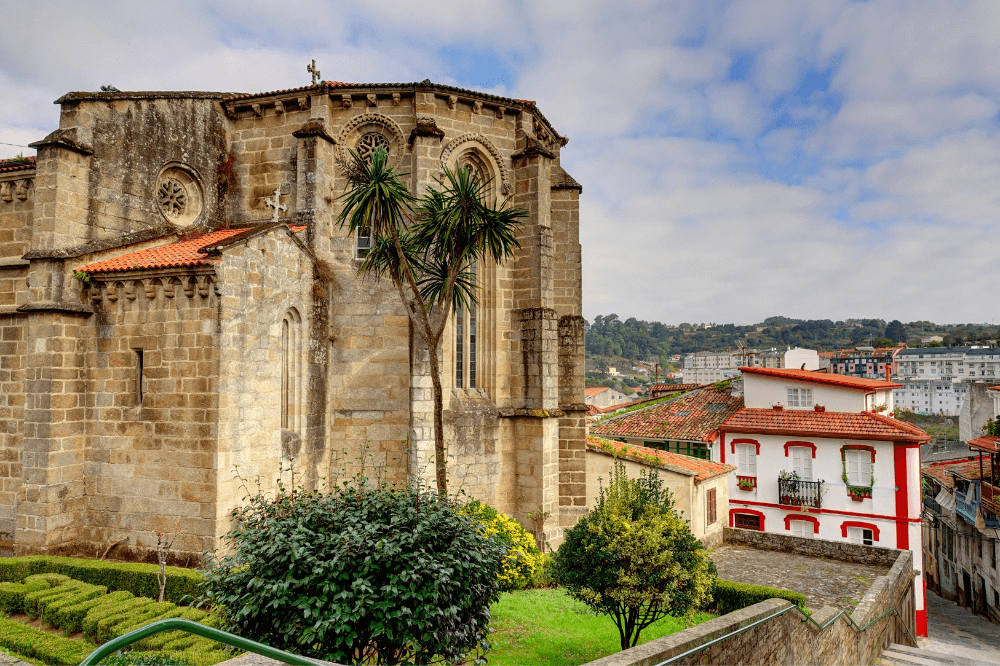
Known as “Betanzos of the Knights,” it was once one of the seven capitals of the old Kingdom of Galicia and still preserves a strong medieval heritage that makes it a rewarding place to explore.
Among its highlights are stunning Gothic churches like San Francisco, where you’ll find the tomb of Fernán Pérez de Andrade “O Bo,” and Santa María do Azougue both remarkable examples of the town’s medieval splendor.
But Betanzos isn’t just about history. It’s also famous for a beloved culinary gem: the Betanzos-style tortilla.
This local take on the Spanish omelette, known for its creamy, runny texture and typically made without onions is a true icon of Galician cuisine.
You’ll find it served in many of the town’s eateries, and tasting it is the perfect way to round out your cultural visit with a bite of delicious tradition.
8. Combarro
This small fishing village, perched on the shores of the Pontevedra estuary, is a living postcard of traditional Galician architecture and a perfect destination for those looking for charm, authenticity, and stunning coastal scenery.
What truly sets Combarro apart are its hórreos and cruceiros by the sea.
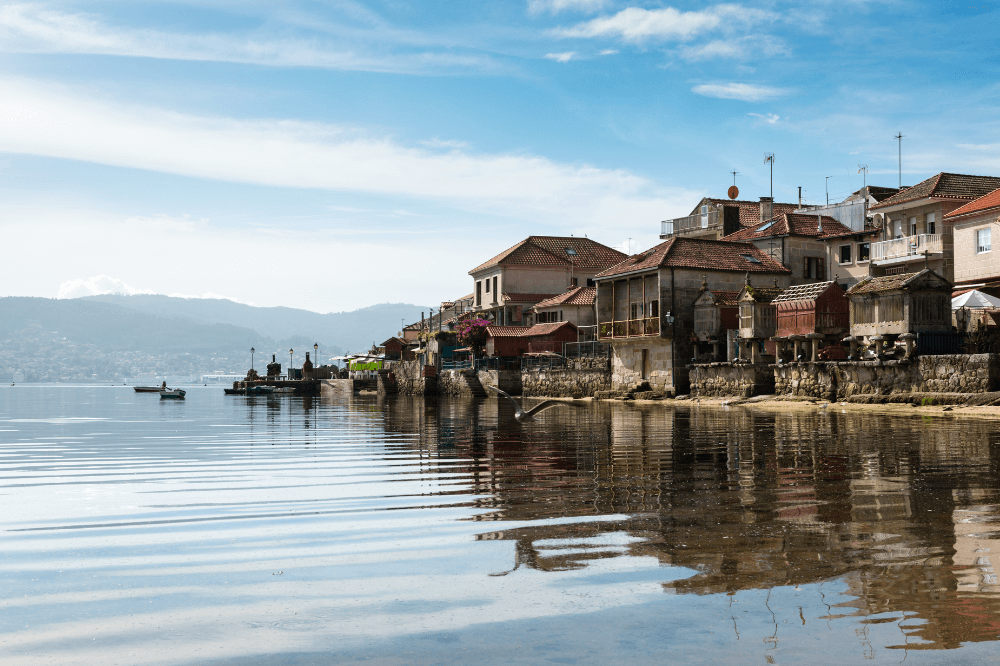
These traditional stone granaries, built to store grain, line the waterfront and seem to rise straight out of the water, creating one of the most unique and photogenic landscapes in Galicia.
Beyond the hórreos, Combarro boasts a beautifully preserved historic center.
Its cozy little squares, traditional taverns, and the constant movement of fishing boats in the harbor all contribute to a warm, timeless atmosphere.
Our best advice? Wander without a plan, soak up the peaceful rhythm, and let yourself be immersed in the local way of life.
9. Setenil de las Bodegas
This village, part of the famous White Villages Route, is a must for those looking for something a little different, where you can truly see how life has adapted masterfully to the land itself.
What makes Setenil de las Bodegas stand out is its incredibly unique layout: homes are quite literally built into and beneath the massive rocks carved by the Trejo River.
As you stroll through streets like Cuevas de la Sombra or Cuevas del Sol, you’ll walk under enormous rocky overhangs that form natural roofs for the houses, an experience that’s as awe-inspiring as it is photogenic.
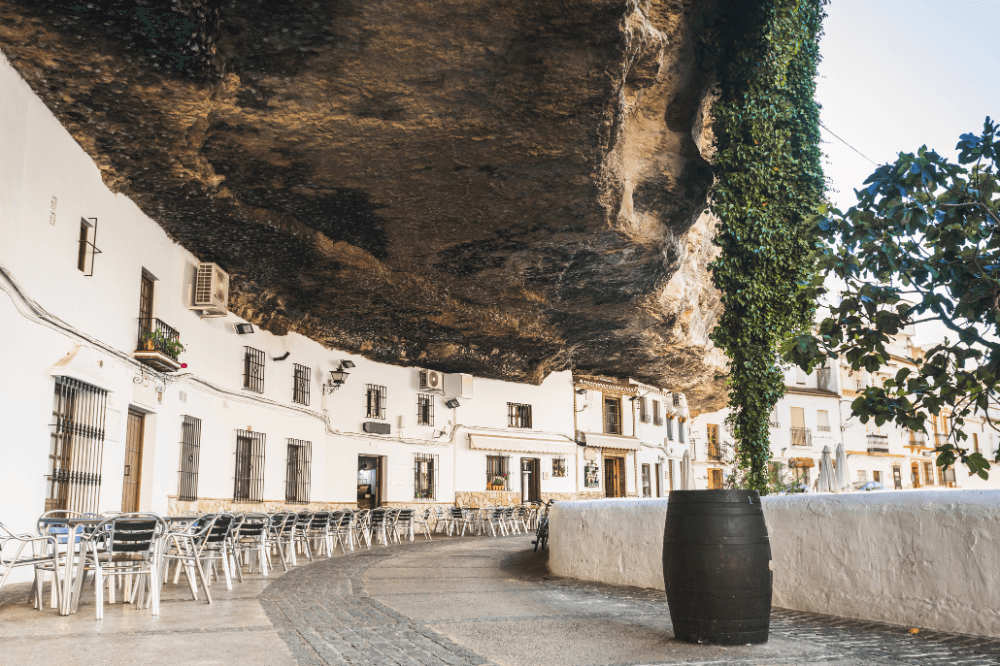
But Setenil is more than its architecture.
It’s also the perfect place to enjoy local Sierra de Cádiz cuisine in a one-of-a-kind setting.
Many of the bars and restaurants have terraces tucked right beneath the rocks, where you can sample local specialties like cured meats and olive oil.
So if you’re planning a road trip through Andalusia and want to visit a village that will truly leave a lasting impression, Setenil de las Bodegas is a stop you won’t want to miss.
10. Aínsa
Though small in size, this village has been declared a Historic-Artistic Site and it’s a true medieval treasure for travelers seeking a destination rich in history, nature, and timeless charm.
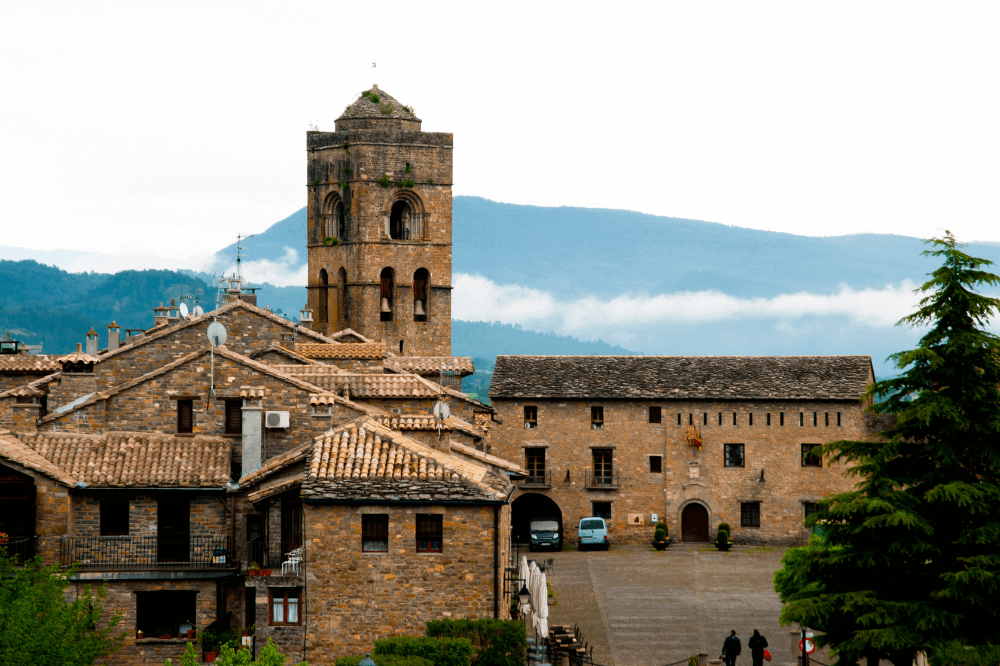
At its heart lies the impressive Plaza Mayor, an irregularly shaped square surrounded by arcaded buildings that still hold onto their old-world beauty.
Here you’ll also find the entrance to the Collegiate Church of Santa María, with its defensive tower, and the ruins of Aínsa’s medieval castle.
From the top of the village, the views over the Mediano Reservoir and the Ordesa and Monte Perdido National Park are simply spectacular.
Beyond its heritage, Aínsa is the perfect base to explore the surrounding natural wonders.
You’re right in the heart of the Pyrenees, with easy access to hiking trails, mountain landscapes, and adventure sports.
Just nearby, you’ll also find the Sierra y Cañones de Guara Natural Park, a paradise for canyoning and birdwatching.
Make Your Visit Even More Meaningful with Sazón The Folk Cook
We’ve just taken you on a journey through some of Spain’s lesser-known gems hoping to inspire you to explore beyond the usual tourist trail.
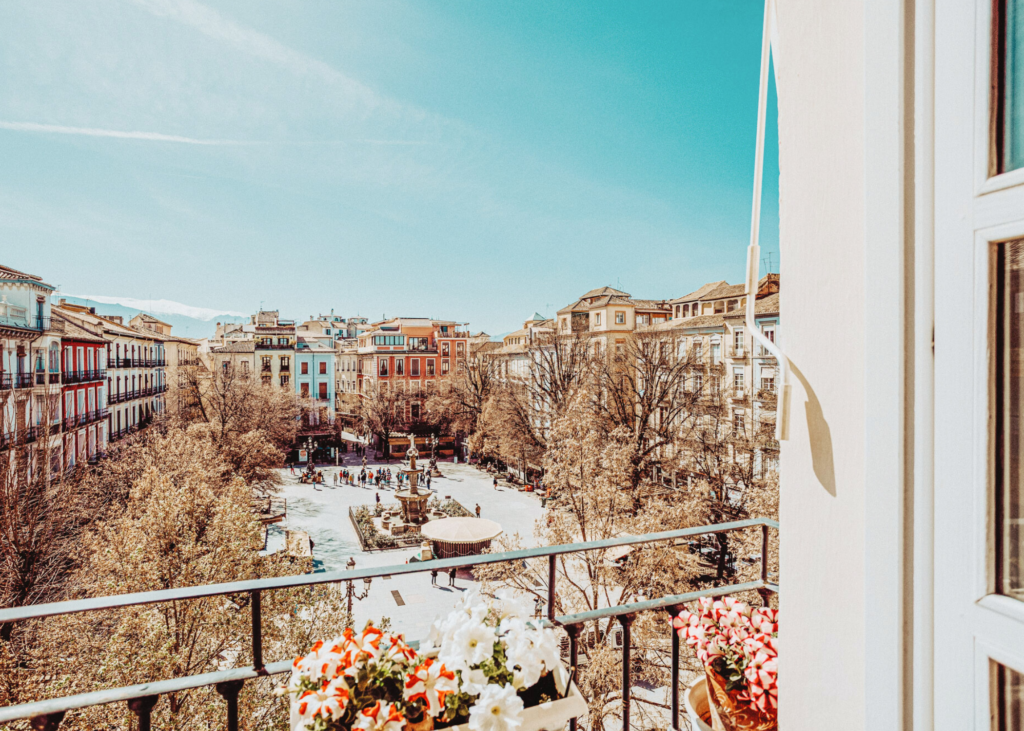
Now, we’d love to invite you to take your trip one step further and enjoy a truly authentic culinary experience.
At Sazón The Folk Cook, we offer something different: the chance to enjoy traditional, home-cooked meals in the private homes of local hosts.
It’s not just about food, it’s about connecting with the local culture and savoring regional cuisine the way locals do.
If you’re ready to discover the genuine flavors of these destinations and create unforgettable memories with the people who live there, we invite you to browse all our experiences.
We’re confident it’ll be the perfect complement to your next adventure.





